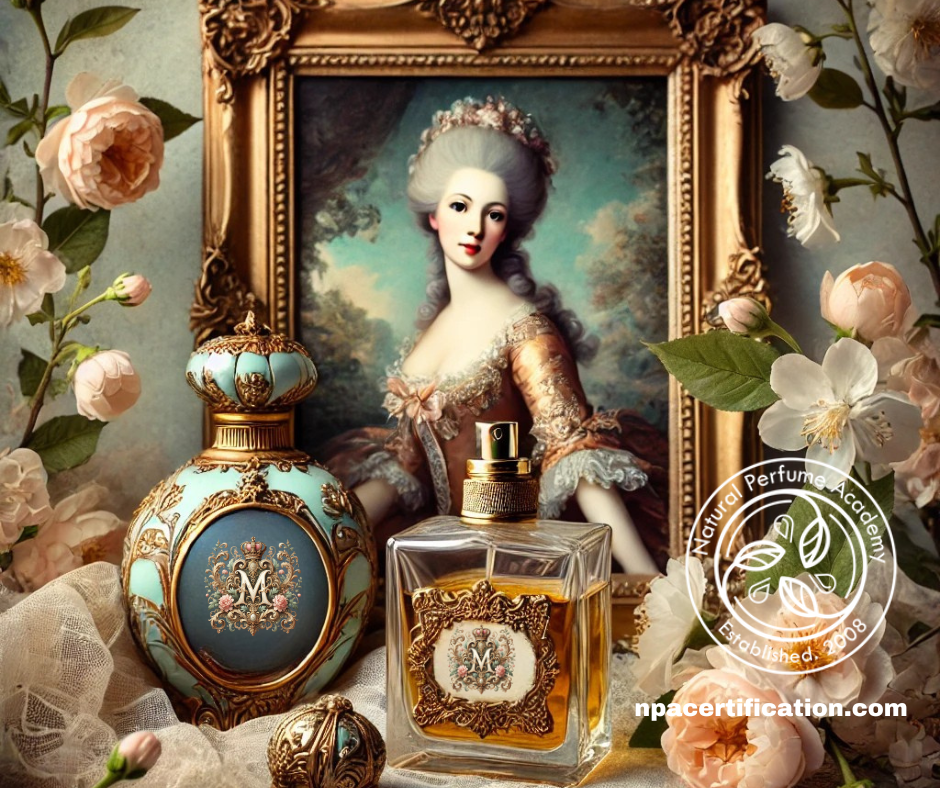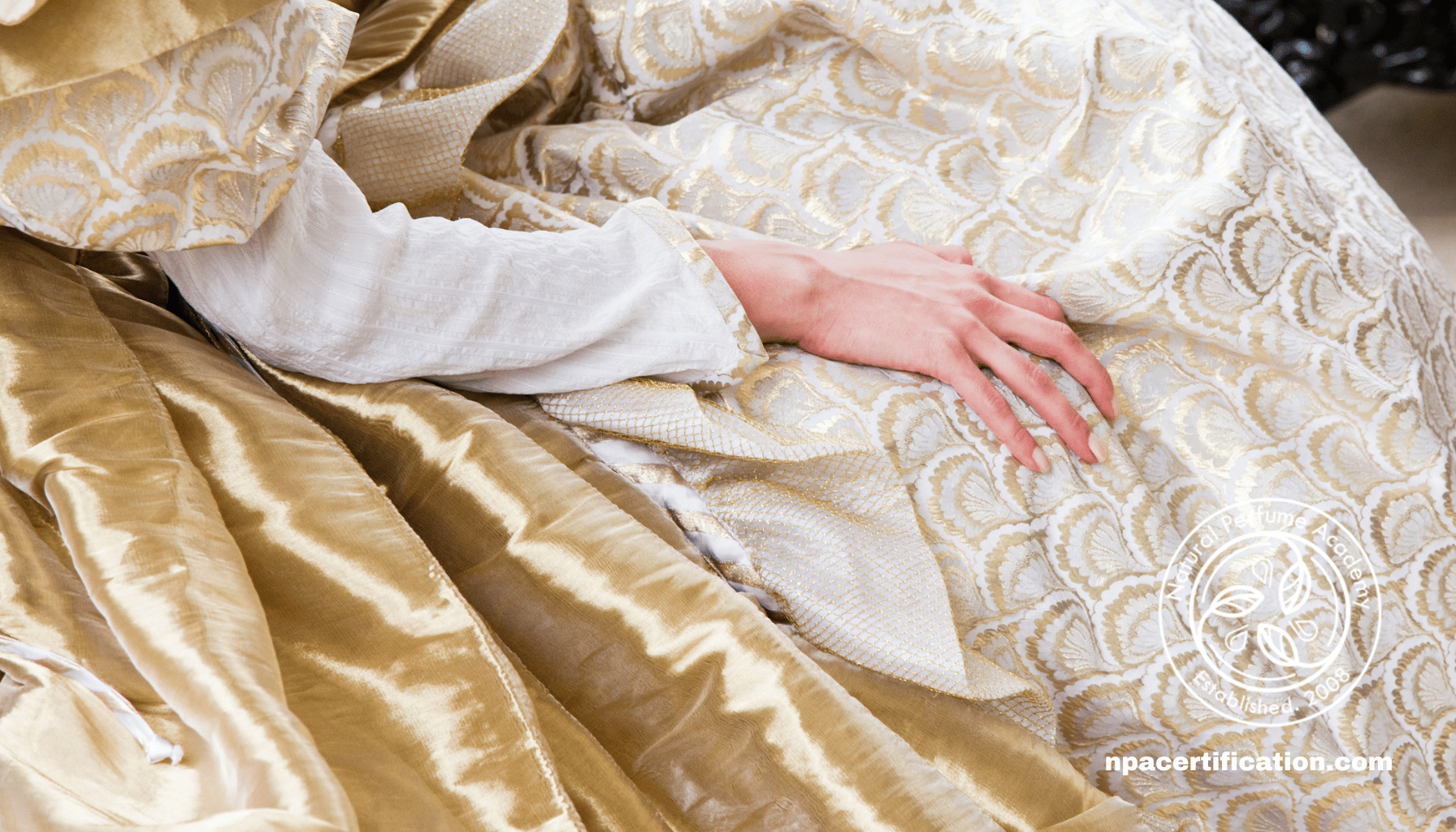
Marie Antoinette’s Scent of Sovereignty
The Scented Oasis of the Petit Trianon
Marie Antoinette’s retreat, the Petit Trianon, was not just a physical escape but a sensory one. She surrounded herself with fragrant gardens filled with jasmine, tuberose, and orange trees, which influenced her perfume preferences. Her private quarters were infused with scented sachets placed in drawers, linens, and even the walls. These sachets contained lavender, rose petals, and cloves—ingredients Fargeon later incorporated into her perfumes. This immersive approach to scent reflected her desire to create a utopia untouched by the pressures of court life.
The “Perfume of the Queen” Recipe (Modern Recreation)
While exact 18th-century formulas are lost, historians and perfumers have reconstructed fragrances based on Fargeon’s notes and Marie Antoinette’s tastes. Musée du Parfum in Paris and perfumer Francis Kurkdjian (creator of Maison Francis Kurkdjian) collaborated on a 2006 recreation called “Sillage de la Reine” (“The Queen’s Trail”). Key notes included:
Bergamot (for freshness)
Orange blossom (her favourite, sourced from Grasse)
Rose de Mai (symbolising femininity)
Jasmine (for sensuality)
Sandalwood and vetiver (base notes for depth)
Ambergris (a rare animalic fixiative used in royal perfumes)
This blend aimed to evoke her love for “sunlit gardens and powdered elegance.”
Perfume as Political Weapon
Marie Antoinette’s critics weaponised her perfume obsession. Revolutionary propaganda exaggerated her indulgences, portraying her perfumes and beauty rituals as symbols of royal excess. Ironically, her perfumes were often light and fresh, contrasting with the heavy animal musks favoured by earlier monarchs. This shift mirrored her attempts to modernise the monarchy’s image, but it backfired, fuelling public resentment of her “excess.”
The Lost Perfume Trunk
When Marie Antoinette fled Versailles during the Revolution, she reportedly abandoned a trunk filled with her perfumes, gloves, and beauty products. The contents—likely including Fargeon’s bespoke creations—were looted, symbolising the collapse of royal privilege. Historians speculate these lost scents might have been her most personal, crafted for intimate moments rather than public display.

The “Ghost Scent” of the Conciergerie
During her imprisonment in the Conciergerie, Marie Antoinette was denied luxuries, but she reportedly kept a handkerchief doused with a faint lavender perfume. Guards noted the scent lingered in her cell long after her execution, becoming a ghostly legend. Lavender, associated with calmness, may have been her final act of defiance—a quiet assertion of dignity.
“Perfume was Marie Antoinette’s silent language of resistance. In a world that sought to reduce her to a ‘foreign’ queen or a frivolous spendthrift, her scents asserted her identity: regal, refined, and unyielding.”
— Élisabeth de Feydeau, A Scented Palace
Modern Rediscovery: A 250-Year-Old Scent
In 2014, historians analysing a letter sealed by Marie Antoinette in 1791 detected traces of orange blossom and jasmine on the paper. Using gas chromatography, scientists identified molecules matching Fargeon’s recipes, offering tangible proof of her perfume’s composition. This discovery reignited interest in her olfactory legacy.
DIY Marie Antoinette-Inspired Scented Sachet
For readers to connect tactilely with history, include a simple recipe inspired by her sachets:
Dried rose petals (symbolising love and secrecy)
Lavender buds (for tranquility)
Orris root powder (a fixative with a violet-like scent)
Clove buds (spice, believed to ward off illness)
A drop of bergamot essential oil (her favourite citrus)
Mix ingredients in a muslin bag and place in drawers—a nod to her scented world.
Why This Matters
Marie Antoinette’s perfumes were more than vanity; they were a language of power, vulnerability, and self-expression. By weaving in these details—her gardens, reconstructed scents, and the science behind her legacy—you create a multidimensional portrait that transcends the “let them eat cake” caricature. Her story reminds us that scent is history’s invisible archive, preserving intimacy long after empires fall.
Marie Antoinette’s world was steeped in scent—an invisible signature of power, passion, and luxury. Her love for perfume shaped history, and today, the art of natural perfumery continues to captivate and inspire.
If you’re fascinated by the secrets of historical perfumery and want to deepen your knowledge, discover the Natural Perfume Academy’s Diploma Course. Immerse yourself in the timeless craft of botanical fragrance creation and learn from experts in the field.
Begin your journey into the art of natural perfumery today: NPA Diploma Course